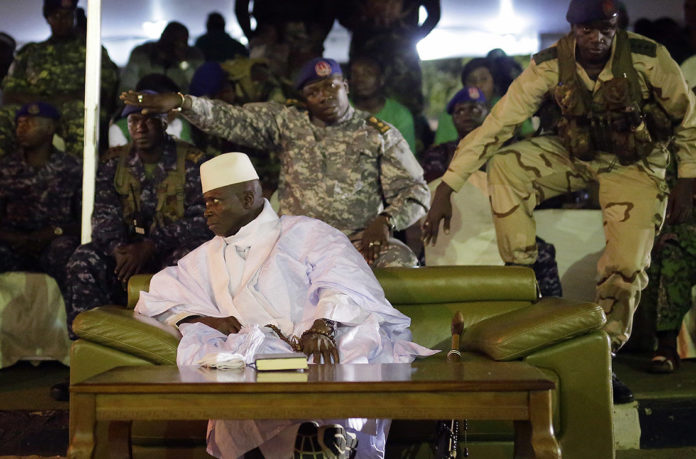By: Christian Conteh
The History
The year was 1994, the government led by President Dawda Jawara had been in power for almost three decades (1965-1994). The Gambia enjoyed a thriving democracy, at a time when countries in West Africa were experiencing coups. The small West African Country upheld the core values of peace, stability and hospitality, and earned the name the ‘smiling coast of Africa’.
However, the constitution at that time did not consider the issue of term limits (it still does not), which allowed governments to overstay power. The government started to lose its grip on power which resulted in the emergence of factions and rivalries over who will succeed President Jawara, this eventually fragmented the ruling party.
Taking advantage of the political crisis, Gambia’s first president was overthrown in a military coup led by Yahya Jammeh in 1994. What was meant to be an interim two-month stint ended up becoming a 22-year hegemony.
As expected instead of building upon the achievements of the first republic, the dictatorial regime started dismantling democratic institutions. The 1997 constitution was amended 52 times, allowing for the erosion of civil liberties, constraints on political opponents and tightening of power in the hands of President Jammeh.
The Democratic Revolution
The year 2017 was the beginning of a democratic revolution for the Gambia. The autocratic leader Yahya Jammeh, who had ruled the country since 1994 and had lost the 2016 election only to retract his concession of defeat was forced out of office and into exile by a coalition of opposition parties with the support of the Economic Community of West African States (ECOWAS)
The Adama Barrow led government began to lay the foundation which would eventually address the dire need for a total transformation of The Gambia.
Barrow, it was reported inherited a virtually bankrupt country with a poorly functioning state apparatus and extensive corruption. The Gambia’s international reputation had been marred by Jammeh’s erratic leadership style. Under his rule, the country had experienced extensive human rights abuses such as torture and extrajudicial killings.
Building The Democratic Structures
There was positive economic news that accompanied the Barrow victory in 2016, particularly in terms of robust GDP growth, a rebound in the vital tourism industry, and significant pledges from bilateral partners. However, other factors weighed heavily on The Gambia’s economic outlook.
Its debt burden was and probably still is unsustainable and there are significant structural obstacles, including a weak administrative apparatus in key areas, high unemployment, and a lack of appropriate human resources.
The political and legal developments under Barrow became arguably more promising. His government has not only ended or reverted some of the more egregious practices of the Jammeh era but has overseen the adoption of a sweeping transitional justice program. This opening up of the political climate in the Gambia is confirmed by limited public opinion polling, which suggests that Gambians feel considerably freer than under the Jammeh government.
There is a greater diversity of political parties at both the national and local levels. The consolidation of these democratic gains is undermined, however, by the continued existence of some of the more onerous laws from the Jammeh era. There have been several protests over environmental issues and service delivery to which the Barrow government has responded with high-handedness. In one case, police officers killed three protesters and injured up to twenty others.
The Barrow government has also not been immune to allegations of corruption and malfeasance. While the Gambia has a history of ethno-religious harmony, there is lingering resentment between different groups, particularly directed against the Jola ethnic group to which the former president belonged.
Building a Better Gambia
Five years ago, Gambians took a decisive decision to uproot the 22-year dictatorial regime of Yahya Jammeh. Over the weekend Gambians gave Adama Barrow the opportunity to lead for yet another five years.
This came after Barrow convincingly won the Saturday 4th December 2021 race to State House and was declared President of the Republic of The Gambia by Alieu Momar Njai, Chairman of the Independent Electoral Commission (IEC).
Barrow pulled 457,519 of the valid votes cast, whilst his close contender opposition strongman Ousainou Darboe pulled 238, 253. Mama Kandeh of the GDC recorded 105,902 followed by veteran politician Halifa Sallah of PDOIS who got 32, 425 of the valid votes cast. Independent Candidate Essa Faal had 17, 206 and NUP Leader Abdoulie Jammeh recorded 8,252.
Prior to election day, President Barrow made several promises which seek to transform The Gambia, it is on this basis he won the presidency. Gambians now expect him to work the talk and deliver.
The Gambia still has economic challenges, but the general outlook is encouraging with GDP expected to reach 2.00 USD Billion by the end of 2021, according to Trading Economics global macro models and analysts expectations.
In the long-term, the Gambia GDP is projected to trend around 2.10 USD Billion in 2022 and 2.30 USD Billion in 2023, according to some econometric models.
The need for a new constitution and a review of the many dictatorial legislation cannot be overemphasized. Simply put President Barrow has his work cut out for him and the Gambian people are eager to see development.








